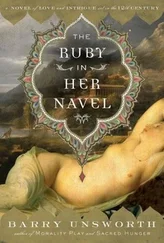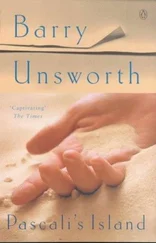______
“I can’t say I’m sorry that the Johanssons have gone,” Patricia said.
“They got on your nerves rather, didn’t they?”
“Well, didn’t they get on yours? Darling, your glasses could do with a bit of a clean.”
Palmer took off his glasses, which were often dusty owing to his habit of rooting about among dusty things, and, peering closely at them, fumbled in his pockets for a handkerchief, failed to find one, and gave the lenses a brisk rub on the front of his shirt. “I didn’t take them all that seriously,” he said. Patricia took things pretty seriously—he knew that—or she didn’t take them at all. She was feeling sorry now for having spoken so crossly to the Swedish couple, instead of being worldly and ironical.
“I suppose it sounds ill natured,” she said, “but I think it was that rather awful joy of theirs that got me down most of all. I mean, they were totally out of reach. Neither of them has any sense of metaphor. I’m a member of the Anglican Church, I go to communion, but I can spot a myth when I see one. We all aim at happiness, I suppose, but I wouldn’t want to find mine in a literal belief in some vengeful brute up in the sky raining fireballs down on whole populations.”
“They are happy in each other, more than in anything else, I think. Talk about common interests. Hand in hand they have discovered the earthly paradise. It’s enough to put a smile on anyone’s face, isn’t it? Personally, what I find really surprising, and somehow depressing, is the refusal to make comparisons, to allow the mind a bit of room. They will labor to prove the Genesis version of the Deluge, for example—I daresay that members of the Society for Biblical Research are combing Mount Ararat at this very moment, looking for fragments of the rudder. What they will never do is sit down quietly somewhere and read a bit of comparative mythology. They won’t say to themselves: Well now, this story already existed in both Sumerian and Babylonian as early as 2000 B.C. The names are different, of course—God is called Ea and Noah is called Uta-napishtim—but the instructions are all there: Build a boat, fashion it so-and-so, bring all seeds of life into it, and so on. I haven’t got the text here with me but I have it at home, it’s in volume four of Rawlinson’s Cuneiform Inscriptions of Western Asia. I’ll show it to you when we are back in England, if you like.”
Patricia smiled at him. “I’ll look forward to that,” she said, and rarely had she meant anything more profoundly. Sumerian mythology and working for the vote and friends by the fireside and a glass of sherry and the house they shared together…
“Take this Garden of Eden business,” Palmer said, warmed and encouraged. She was interested in what he said; she approved of him—he had never felt so much approved of. “They have found similar accounts in Sumerian records, strikingly similar accounts actually. The whole story of an earthly paradise belongs to the mythology of the ancient Near East. I mean, the term itself derives from the Akkadian edinu , which was borrowed in its turn from the Sumerian eden . In the Sumerian story there occurs the word Nin-ti , Lady of the Rib. There are some variations, naturally. There were eight fruits forbidden to the Sumerian pair, and instead of a serpent the seducer was a fox.”
“It’s the same thing, though, isn’t it? Whether they were tempted by a fox or a snake, it’s still about the danger of human overreaching, wanting to be like the gods, wanting to know more than we should.”
“Notions of paradise differ,” Palmer said. “The Johanssons think of it in terms of an apple tree inside a diamond inside a triangle. Some see it in terms of speedboats. My idea of it is bound up with knowing more, not less. You with me day by day, a regular income, a reasonably spacious house in Bloomsbury, not too far from the British Museum…”
14.

They were helped in reaching the lower steps by the discovery of a natural cave where the limestone had split and shifted owing to the operation of underground streams. Miraculously, as it seemed, the water had bypassed the tomb.
There were six steps altogether, descending steeply. Then, after a space of four feet, three broader steps that mounted to the doorway, fallen in and ruinous, of an entrance chamber. At once, just beyond the threshold, they began to make finds, various bowls and drinking vessels of alabaster and pottery, needed for feasting in the life to come. They were beneath the roof of the vault now. This had held up through the millennia, and the stone floor beneath was clear. There was a limestone statuette lying against the wall, a seated figure, upturned.
Further work was suspended while Palmer took photographs with the aid of lamps. For a moment, while he did this, there was no one with him, Somerville and Elias and the group engaged in clearing the threshold having returned to the surface, where Somerville told them to remain for the time being. He was possessed now by fears, which he recognized as irrational but could not help, that someone, anyone, would do some irreparably clumsy thing, somehow interrupt and violate this miraculous sequence that had started with the first sight of the descending steps, had led to this threshold, would lead across the floor of the anteroom, through the fallen masonry that blocked the entrance beyond, and so into the burial chamber itself and the royal sarcophagus he believed would lie there. The sight of Jehar, standing some distance off, did nothing to reassure him. It was obvious that Jehar had not taken no for an answer; he haunted the site, a ubiquitous presence, always alone, always watching.
Palmer did not touch the statuette, which was grotesquely tumbled from the sitting position, skirted knees raised, head lying back, rather like a large white beetle that had been overturned and could not get itself right again. But he looked closely at it, more closely than he had had leisure for up to now. And he played the narrow beam of his torch over it, the better to do this. And in so doing he noticed what neither he nor Somerville had noticed previously: There was the stylized symbol of a spade thinly incised along the forward base.
Somerville, descending alone, found his assistant on his knees, as if in prayer. “The spade,” Palmer said, and he shone his torch on it again for Somerville’s benefit. “This can’t be Assyrian work.”
“Why not?” There was no note of dissent in this, only a simple question. Palmer knew more about this sort of thing than he did. “It doesn’t look so very much like a spade, more like a hooded figure,” he said.
“It’s the Babylonian symbol for a spade.”
“Babylonian? What is it doing here then?”
“It must have been placed here to guard the entrance to the tomb.” Palmer squatted to take another look. “There’s no doubt about it,” he said after a moment. He looked up at Somerville, and the beam of his torch cast a partial light over the lower part of his face, giving him a curiously disembodied look. “The spade is the sacred symbol of Marduk, the Great God of the Babylonians.”
“A captured god,” Somerville said. “Yes, there are precedents for it in Assyrian practice. It would make sense if you had your back to the wall, if the Babylonians were at the gates and your own gods had failed, to use the enemy’s god for protection.”
“A very ancient and potent god,” Palmer said. “He doesn’t look so impressive at the moment, does he, doing a knees-up like that? I suppose we can put him upright now.”
The statuette, though no more than a foot tall, was surprisingly heavy. A considerable effort was needed to raise it, very carefully, and set it upright against the wall. At once, in this restored position, it reasserted its elemental power, head thrust forward, hands on knees, transformed into an object of terror and devotion.
Читать дальше












